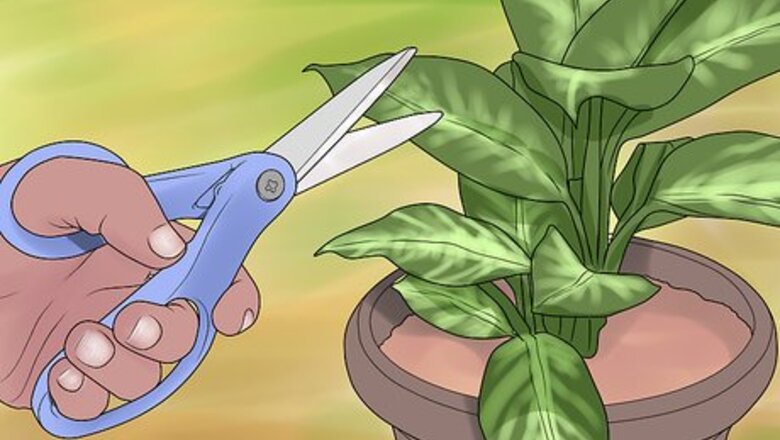
views
Removing Brown Tips While Preserving Leaf Shape
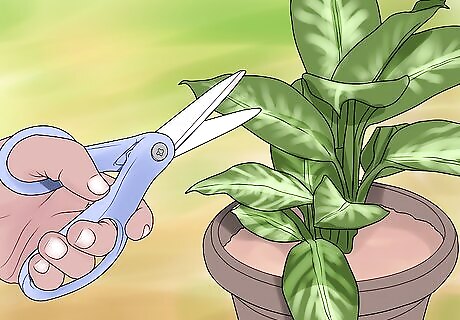
Use sharp scissors or kitchen shears to trim leaves. For the best results, you should use as sharp a pair of scissors as possible. Very sharp blades minimize damage to the plant's cells, which reduces the amount of energy it must expend healing the wound. Any sharp, sturdy pair of scissors will do, but the shape and strength of kitchen shears make them a great choice for this job. To minimize the risk of transferring any plant diseases, especially if you’re trimming more than one plant, wipe down the scissors with rubbing alcohol both before and after using them.
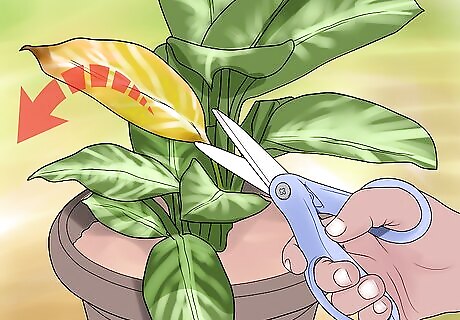
Remove the whole leaf only if most of it is brown. Leaves with small brown areas along their edges or tips still produce energy for the plant through photosynthesis. However, if a leaf is almost entirely brown and dry, then it’s not producing energy and can be removed entirely by cutting it away. If more than half of the leaf’s surface area is brown—and especially if it’s at least two-thirds brown—then it’s a good candidate for full removal. The preferred way to remove a whole leaf is to cut the base of its stem with sharp scissors. Alternatively, you can pluck it by pinching the base of the stem between the nails of your thumb and index fingers.
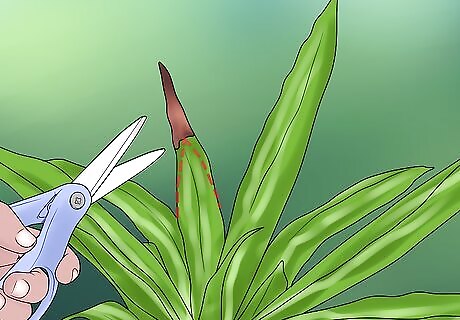
Replicate the shape of the leaf tip with your cuts. Study the tip shape of some healthy leaves, and reproduce that shape as closely as possible with your cuts. For instance, if you’re dealing with long, straight leaves with pointed tips, make two angled cuts at the tip in order to re-create a triangular shape at the end. Shaping the cuts is only necessary for aesthetic purposes. Cutting straight across the tip of the leaf to remove the dead area isn’t any more damaging to the plant. With some practice, your shaped leaves will be indistinguishable from the fully healthy ones!

Leave a small amount of brown tip behind, if you so choose. Some indoor gardeners insist that it’s best to leave a very small sliver of the brown area remaining on the leaf. In doing this, you avoid opening a fresh wound in the healthy part of the leaf, which might stress the plant and cause further browning. If you’re only trimming one or two leaves, leaving some brown behind doesn’t need to be a concern. However, if you’re trimming many leaves at once, you may want to limit the wounds you create in healthy leaf sections.
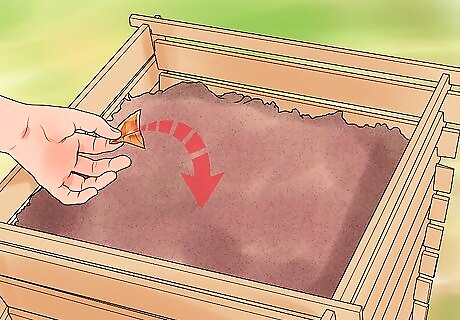
Compost brown leaf tips unless you suspect disease. If you have a compost pile or municipal composting program, you can add the leaf tips to your compost. If you suspect that the houseplant is diseased, however, avoid potential contamination of your compost and discard the leaf tips in the trash. Brown tips alone rarely indicate disease. A diseased plant will usually have numerous leaves with brown splotches, holes, or complete browning.
Addressing Over- or Under-Watering
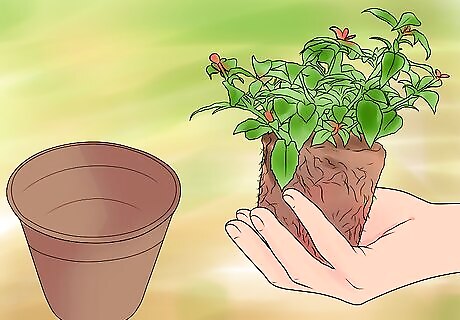
Pull the plant from the pot to inspect the soil and roots. Brown leaf tips are most often a watering issue, but both over- and under-watering can cause them. Hold the plant over the sink, grab the stem and jiggle it a bit, and pull the plant and root ball from the pot. This will make it easier to diagnose under- or over-watering. If the soil crumbles away instead of holding together in a clump, you’re under-watering. If water drips from the soil, or if the roots look moldy at the ends, you’re over-watering.
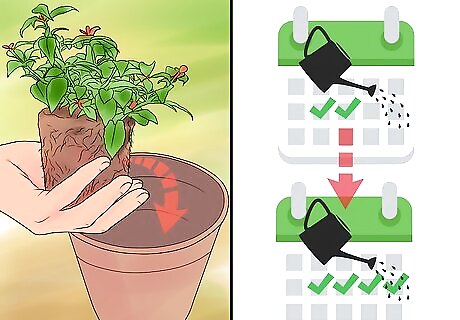
Re-pot an over-watered plant and adjust your watering schedule. If you find water-logged soil and roots when you pull the plant from its pot, you can try leaving it out of the pot for several hours, then putting it back once things dry out a bit. However, it’s often better to scrape some of the water-logged soil away from the root ball, then re-pot the plant along with some fresh potting soil. If the tips of the roots look rotted or dead, you can snip them off with scissors. Instead of giving the plant less water at a time on the same schedule, water the plant fully but less frequently. For instance, if you’re currently saturating the soil with water every 2 days, don’t switch to just moistening the soil every two days. Instead, saturate the soil every 4 days.
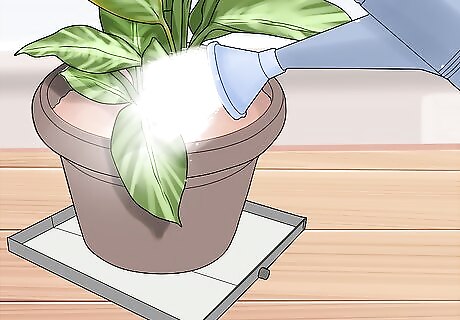
Saturate the soil when watering an under-watered plant. After you've identified under-watering as the problem, put the plant back in its pot and give it a thorough watering. Every time you water the plant, you want to see water running out of the drain holes in the bottom of the pot. If this isn’t happening, you’re not giving the plant enough water. Place a drain pan under the pot to catch the excess water, or water the plant over the sink. Keep watering the plant on the same schedule (for instance, every other day), but give it more water each time. Pull it from the pot again in a week (on a non-watering day) and check if the soil is dry. If so, start watering the plant more frequently (e.g., daily) as well as more fully.
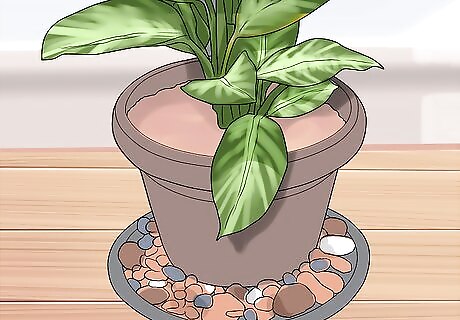
Increase the surrounding humidity, especially for tropical plants. In addition to frequent watering, tropical plants need humidity from the surrounding air. Placing the pot in a shallow bowl filled with rocks and water can help increase the humidity around the plant. If your house has very dry air, you might also consider running a humidifier nearby. It might also help to spritz the leaves with a spray bottle full of water once a day. Keep the plant away from heating or cooling vents that blow out dry air.
Diagnosing Other Leaf-Browning Causes

Don’t confuse brown tips with leaf shedding. Many plants, such as most palm varieties, shed their lower leaves regularly as part of their natural growth. There is no way to keep these shedding leaves from gradually turning brown, and they can be clipped away once they are thoroughly discolored and dry. A brown-tipped leaf will look green and healthy in all areas except for the brown tip.
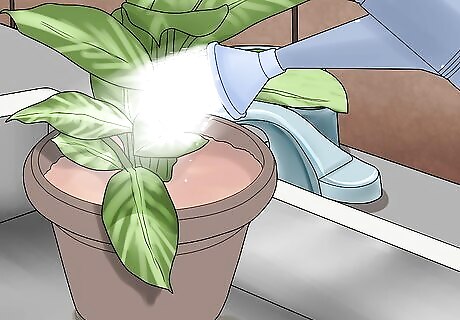
Flush the plant with distilled water for salt, mineral, or fertilizer burn. If your plant isn't being over- or under-watered but still has brown tips, there is probably too much of one or more minerals—most likely salt—in the soil. Excess minerals usually come from hard tap water or too much fertilizer. To flush away the salt or minerals, place the pot over the sink and use distilled water to flush the soil—that is, keep pouring the water until an ample amount runs out of the drain holes. Flush the soil with distilled water 2-3 times over the course of several minutes. To prevent future problems, water the plant with distilled water and reduce your use of fertilizers.
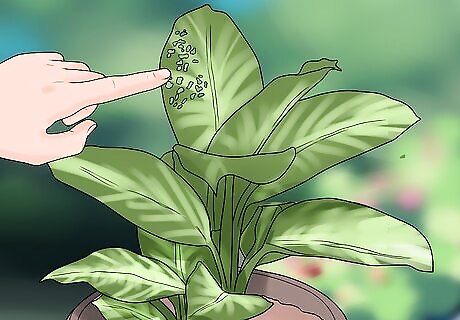
Check for small holes that indicate insect infestation. Small brown spots or holes in your houseplants' leaves can be a sign of an insect infestation. Check the soil and the undersides of the leaves for insects to help diagnose the problem before it gets worse. If you need help identifying likely pests for your indoor plants, and want advice on how to get rid of them, contact your local agricultural extension office or visit your local plant nursery.




















Comments
0 comment